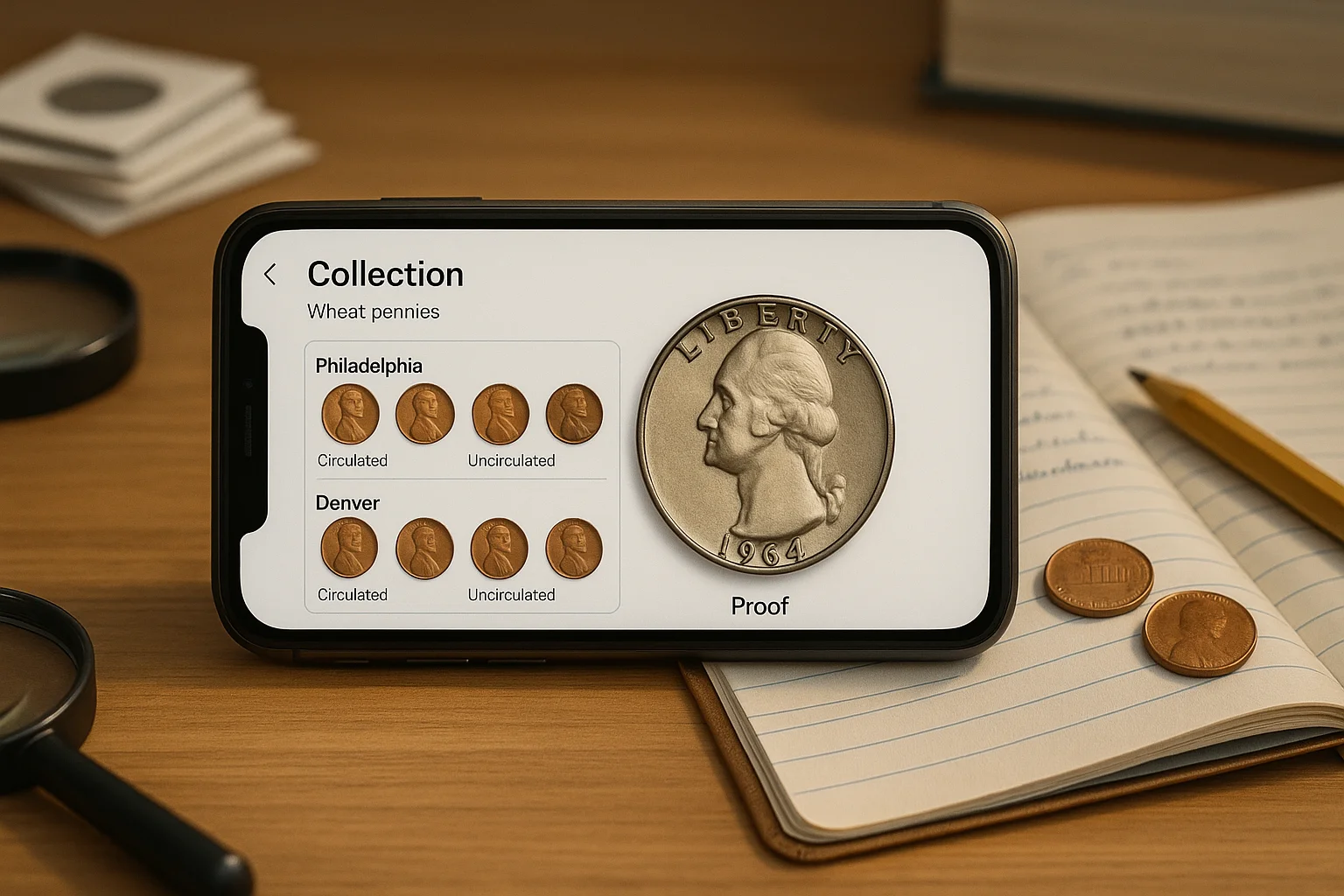Learn to Spot Valuable Wheat Pennies! Here Are Main Signs to Look For
Wheat pennies—formally known as Lincoln Wheat cents—were minted from 1909 to 1958. At first glance, they may look like ordinary copper coins, but seasoned numismatists know these little cents can carry big stories and even bigger value. Hidden in old jars, dusty boxes, or rolls of pocket change, some valuable wheat pennies have sold for hundreds or even thousands of dollars. Let’s learn how to spot them in daily change.
The allure comes from several factors: historical significance, limited mintages, dramatic errors, and, of course, condition. What makes this journey fascinating is that valuable Wheat pennies are not reserved for experts with decades of experience. With the right knowledge, and modern digital aids, even beginners can uncover coins worth far beyond a cent.

Historical Context: Why Wheat Pennies Matter
The Wheat penny series started in 1909 to commemorate the centennial of Abraham Lincoln’s birth. Designed by Victor David Brenner, the coin’s obverse features Lincoln’s portrait, while the reverse showcases two stylized wheat stalks framing the words “ONE CENT.”
For collectors, Wheat pennies represent:
American heritage: Lincoln was the first U.S. president featured on a circulating coin.
Artistic design: The wheat reverse is iconic and remains one of the most beloved motifs in U.S. coinage.
Numismatic milestones: The series includes famous rarities like the 1909-S VDB and the 1943 bronze cents, making it a cornerstone of U.S. collecting.
Because of these factors, even common-date Wheat pennies retain collectible charm, while rare varieties continue to inspire competitive bidding in auctions.
Key Dates and Low Mintages: The “Holy Grails”
The most valuable Wheat pennies are those with low mintages or unusual historical production stories. If you’re starting your search, these coins should be on your radar:
1909-S VDB: Only 484,000 minted, making it the undisputed key to the series. Coins in high grades sell for thousands.
1914-D: A scarce Denver issue. Even moderately worn examples are valuable, while mint state specimens can command five-figure prices.
1922 “No D”: All cents were struck at Denver this year. A handful emerged missing the “D” mint mark, and they are highly prized.
1943 Bronze: Wartime production demanded steel cents, but a few bronze planchets slipped through. These are ultra-rarities, with values well into six figures.
1955 Doubled Die Obverse: Famous for its dramatic doubling, especially on the date and inscriptions. Even circulated examples are worth hundreds.
Key Wheat Penny Values (Approximate, 2025 Market)
Year / Variety | Mintage | Circulated Value | Mint State Value |
1909-S VDB | 484,000 | $800 – $2,000 | $3,000 – $12,000+ |
1914-D | 1.2M | $200 – $800 | $2,500 – $15,000+ |
1922 No D | Unknown | $500 – $1,500 | $3,000 – $20,000+ |
1943 Bronze | <30 | $100,000+ | $200,000+ |
1955 Doubled Die | 20,000+ | $600 – $2,000 | $5,000 – $20,000+ |
Note: Values fluctuate with condition and market demand.
These coins prove one truth: a cent can be worth a fortune if it carries the right story.
Mint Marks and Oddities: Small Letters with Big Impact
One of the most important details when evaluating a Wheat penny is its mint mark—the small letter below the date that reveals where the coin was struck. For the Wheat cent series, these mint marks hold significant influence on value:
No Mint Mark (Philadelphia): Common for many years, but still worth examining for errors or high grades.
D (Denver): Frequently associated with rarities, such as the scarce 1914-D and the 1922 “No D” variety.
S (San Francisco): Typically lower mintages compared to Philadelphia and Denver. Coins like the 1909-S and 1931-S are considered semi-keys.
Mint Mark Errors and Varieties
Certain pennies are famous not because of their year, but due to mint mark anomalies:
Repunched Mint Marks (RPMs): Some coins display doubled or tripled mint marks where the punch overlapped. Example: 1943-D RPM.
Missing Mint Marks: The 1922 “No D” is legendary, but similar missing-mark issues can be found in other years.
Odd Placements or Distortions: Misaligned or distorted mint marks can attract collector premiums, particularly when well-documented in coin references.
Error Varieties: When Mistakes Add Value
Minting errors transform ordinary Wheat pennies into extraordinary finds. Collectors often hunt these unique mistakes, which can dramatically increase a coin’s market appeal.
Common and Valuable Error Types
Doubled Die Obverse (DDO): Strong doubling on the date or inscriptions like “LIBERTY” and “IN GOD WE TRUST.” Famous examples include the 1955 DDO and 1936 DDO.
Clipped Planchets: Sections of the coin are missing from production, creating curved “bites” on the edge.
Die Cracks and Cuds: Raised metal lines or blobs caused by damaged dies. These create unique, collectible patterns.
Off-Center Strikes: Coins struck away from center, leaving part of the design missing. Depending on severity, value can rise substantially.
Wrong Planchet Errors: Very rare, but a Wheat penny struck on the wrong metal (such as a dime blank) can sell for thousands.
Errors combine numismatic intrigue with visual curiosity, making them especially appealing for hobbyists just getting into the thrill of treasure hunting.
Condition and Color: The Role of Preservation
Even without rare dates or errors, conditions can make or break a Wheat penny’s value. Collectors grade coins using the Sheldon scale, ranging from Poor (P-1) to Mint State (MS-70).
What to Look For
Lincoln’s Bust: Strong cheek, jaw, and hair details indicate less wear.
Reverse Wheat Stalks: Crisp lines and intact kernels suggest higher grades.
Fields and Surfaces: Smooth, reflective, and free of corrosion or scratches add desirability.
The Color Factor
Copper coins, like Wheat pennies, are further evaluated by color:
Red (RD): Retains full original copper luster. Most valuable.
Red-Brown (RB): A mix of original red and toned brown. Moderately valuable.
Brown (BN): Fully toned brown, common in circulated examples.
Impact of Condition and Color on Value
Grade / Color | Common Date (e.g., 1940-P) | Key Date (e.g., 1914-D) |
Good (G-4), Brown | $0.05 – $0.20 | $150 – $300 |
Very Fine (VF-20), Brown | $0.25 – $0.50 | $600 – $1,200 |
Mint State (MS-65), Red | $10 – $20 | $6,000 – $15,000 |
As this table shows, condition and color can transform a penny from pocket change into a premium collectible.
Reverse Design Details: More Than Decoration
The reverse of a Wheat penny—two stylized stalks of wheat surrounding the words “ONE CENT” and “UNITED STATES OF AMERICA”—offers more than simple design beauty. For collectors, it is a diagnostic tool.
Die Doubling: Extra thickness on the lettering “ONE CENT” or “E PLURIBUS UNUM” indicates doubled dies.
Die Cracks: Look for raised lines across the wheat stalks, often creating collectible varieties.
Full Wheat Lines: Crisp, unbroken lines within the wheat stalks suggest minimal wear, increasing value.
Careful study of the reverse often uncovers overlooked varieties that elevate a coin’s collectability.

How Digital Tools Enhance Penny Collecting
In today’s numismatic world, technology is a game-changer. Apps like Coin ID Scanner allow even beginners to evaluate coins with confidence. Instead of relying only on guesswork or costly expert appraisals, collectors can instantly access accurate details with a simple photo.
Key Features of Coin ID Scanner (Android/iOS)
Photo-Based Identification: Upload or snap a coin photo to get a detailed “coin card” with mint year, country, denomination, edge, weight, diameter, and market value.
Global Database: Access to 187,000+ coins spanning centuries and regions.
Collection Management: Build a digital catalog of your Wheat pennies and other coins. Add notes, organize by year or mint, and track values over time.
Smart Filters (Premium): Narrow searches by composition, year, or mint mark to quickly locate specific varieties.
AI Coin Helper (Premium): Offers guidance on possible errors, rarities, and grading insights.
Cross-Platform Use: Works seamlessly across Android and iOS devices, making it easy to scan coins anytime.
With these tools, hobbyists can quickly spot hidden rarities—such as a 1943 bronze cent or a 1955 doubled die—before they slip through their fingers.
Practical Tips for Collectors
Handle with Care: Always hold pennies by the edges to avoid fingerprints or oils damaging the surface.
Lighting Matters: A bright desk lamp or natural sunlight reveals doubling, scratches, or color differences.
Document Everything: Keep a written or digital record of dates, mint marks, grades, and error details.
Stay Informed: Join collector forums, subscribe to price guides, and follow auction results to track market trends.
Verify with Experts: When in doubt, confirm your findings with professional grading services like PCGS or NGC.
Conclusion: Finding Treasures in the Ordinary
Wheat pennies may seem like small, everyday objects, but they hold incredible lessons in history, economics, and craftsmanship. From key dates like the 1909-S VDB to error varieties like the 1955 doubled die, these coins continue to inspire collectors and reward those with a sharp eye.
The real advantage today is that anyone can participate. With digital tools like Coin ID Scanner, spotting, identifying, and cataloging valuable pennies has never been easier. What once required years of expertise can now be learned step by step, making numismatics accessible to all.
So the next time you spot an old Wheat penny in your change or family collection, take a closer look—you might just be holding a piece of history worth far more than one cent.









